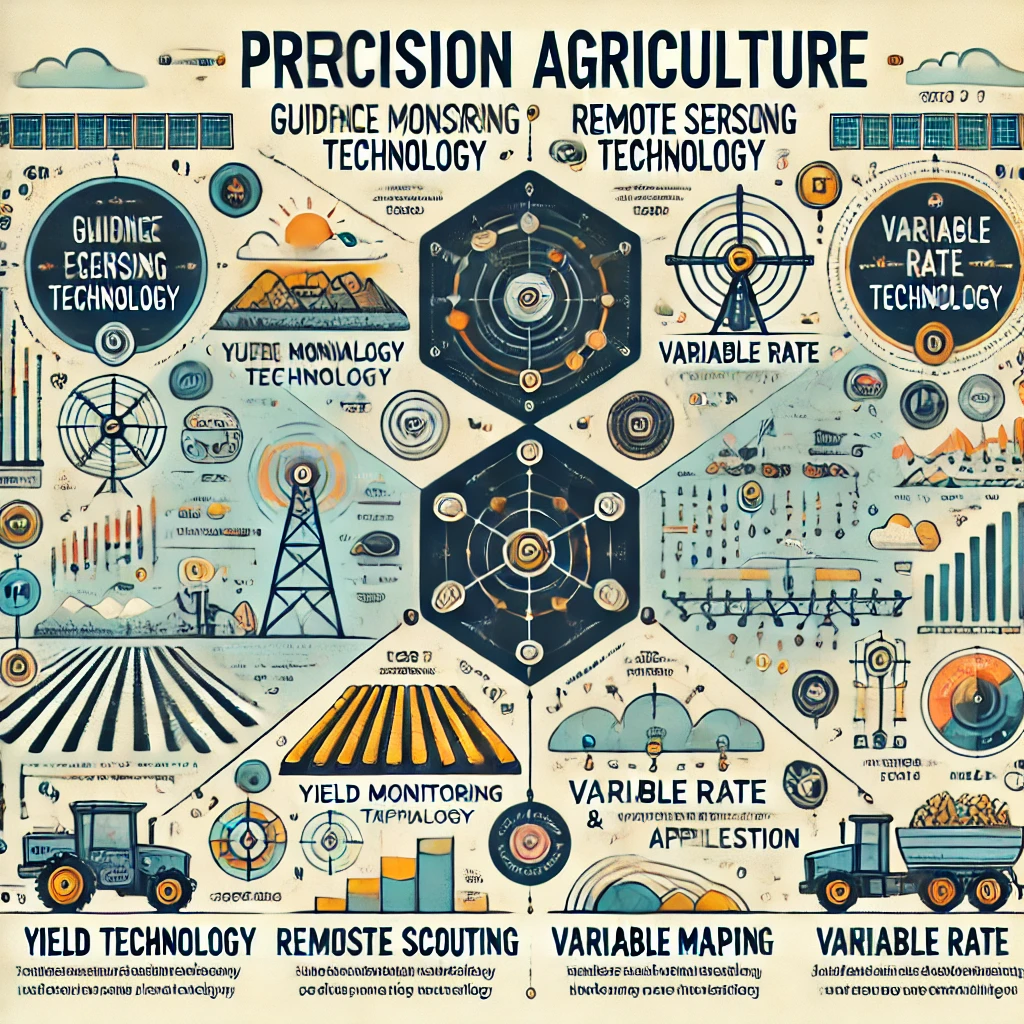The world of agriculture is undergoing a remarkable transformation, driven by the widespread adoption of precision agriculture. This technological revolution is reshaping the way farmers manage their crops, optimize resources, and ensure sustainability, ultimately improving productivity and reducing environmental impact. By integrating data analytics and automation technologies, precision agriculture is addressing some of the industry’s biggest challenges, including resource inefficiency, labor shortages, and the need for sustainable farming practices.
The Role of Data in Precision Agriculture
At the core of precision agriculture lies data collection and analysis. Modern farming techniques now rely on vast amounts of data gathered from various sources, including satellite imagery, sensors, drones, and weather stations. These data sources help farmers monitor the conditions of their fields, including soil health, moisture levels, crop health, and even pest infestations.
Download PDF Brochure @ https://www.marketsandmarkets.com/pdfdownloadNew.asp?id=1243

One of the most critical aspects of data in precision farming is the use of big data analytics. By applying advanced algorithms and AI to process and interpret these massive datasets, farmers gain insights that were previously difficult or impossible to obtain. This data-driven approach allows for real-time decision-making, enabling farmers to make adjustments quickly and efficiently, whether it’s optimizing irrigation schedules or responding to a potential pest outbreak.
For example, soil sensors provide real-time information about moisture levels, ensuring that crops receive the right amount of water at the right time, while remote sensing technologies like drones can monitor crop health and identify areas that need attention. This reduces water waste and ensures that crops are receiving adequate nutrients, ultimately increasing yields and conserving resources.
Automation Technologies Enhancing Precision Agriculture
While data collection and analysis provide critical insights, automation technologies are the key to fully realizing the potential of precision agriculture. Technologies such as autonomous machinery, robotic harvesters, and drone fleets are revolutionizing the agricultural landscape.
Autonomous tractors and robotic harvesters are replacing traditional labor-intensive tasks. These machines can operate with minimal human intervention, performing tasks such as planting, cultivating, and harvesting with precision. This is especially important as labor shortages become more common, and farm operators seek to minimize costs while maximizing productivity. Automated machinery also helps reduce human error, ensuring that tasks are completed consistently and efficiently.
Drones, as part of the automation ecosystem, have become invaluable tools in precision agriculture. They are used to capture aerial imagery of fields, which is then analyzed to detect crop stress, identify pest problems, and assess soil health. Drones can also be equipped with spraying systems to apply fertilizers, pesticides, or herbicides more efficiently, reducing chemical use and minimizing environmental impact.
Moreover, automated irrigation systems powered by IoT devices can be used to adjust water usage based on real-time weather and soil conditions. These systems ensure that water is distributed where it’s needed most, further conserving resources and improving crop yield.
Benefits of Data and Automation in Agriculture
The integration of data and automation in farming practices brings several key benefits:
- Increased Efficiency: Automation reduces the need for manual labor and ensures that farming operations are conducted at optimal times and with the correct inputs. This leads to more efficient use of resources like water, fertilizers, and pesticides.
- Improved Yield and Quality: Data-driven insights allow farmers to make better decisions regarding planting, irrigation, and harvesting. This often results in higher yields, better-quality crops, and reduced crop loss due to pests or disease.
- Cost Reduction: By automating processes and making informed decisions based on data, farmers can reduce operational costs. For instance, automated systems minimize the overuse of water and fertilizers, leading to lower utility and input costs.
- Sustainability: Precision agriculture helps farmers make environmentally responsible decisions, such as using less water or applying fewer chemicals. This contributes to more sustainable farming practices and reduces the carbon footprint of agriculture.
- Real-Time Decision Making: With real-time data on crop health, weather patterns, and soil conditions, farmers can make immediate adjustments to their practices, preventing issues before they become significant problems.
The Future of the Precision Agriculture Market
The precision agriculture market is expanding rapidly, with innovations continuously emerging across multiple sectors, from IoT devices to AI-driven platforms. As the industry evolves, more advanced machine learning algorithms will improve predictive capabilities, enabling farmers to forecast crop performance with even greater accuracy.
In addition, the market for precision agriculture technologies is expected to see increased investment as stakeholders—ranging from ag-tech companies to traditional agricultural firms—recognize the potential for greater profitability and sustainability. This investment is expected to drive further technological advancements, such as 5G connectivity, which will support the real-time data transfer necessary for larger-scale adoption of automation technologies.
The fusion of data analytics and automation in the precision agriculture market is transforming farming from a traditionally labor-intensive industry into a more efficient, sustainable, and high-tech sector. By utilizing real-time data, advanced sensors, and autonomous systems, farmers can optimize their operations, reduce waste, and improve yields, all while contributing to environmental conservation. As technologies continue to evolve, the future of agriculture looks brighter than ever, offering opportunities for greater sustainability and food security worldwide.